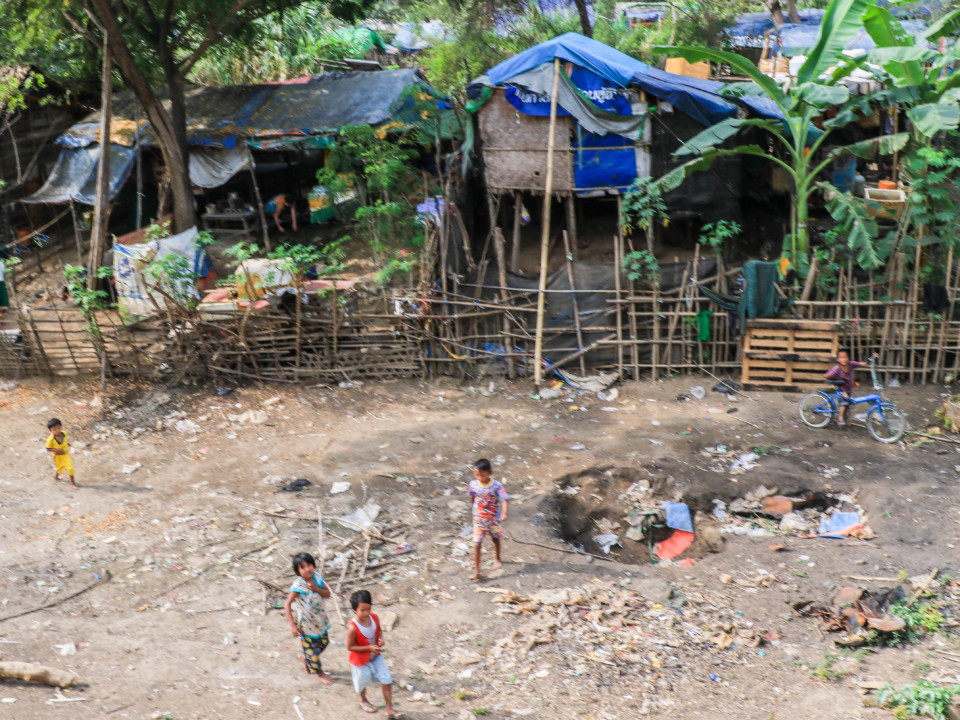With giggles and great agility, seven-year-old Sammy* climbs up on trees, and atop people’s shoulders. He can pluck out your white hairs if you allow him to and smile with glee at his collection of strands. (*name changed for privacy reasons)
If you saw him today, with his wide bright smile, you wouldn’t have known what his life was like in Thailand just a few years ago.
Instead of climbing up trees, and swinging on monkey bars, he was herding buffaloes. This was his job. His parents had sold him off to farm owners.
Herding buffaloes may have been his easier days. His rescuers say he was frequently chained to the wall for not doing his job ‘properly.’
He was also denied food as punishment. When he was rescued, his rib cage was found protruding awkwardly out of his small body from malnourishment.
He’s just one of the children I met who was rescued from such bondage. And his story is not an unfamiliar narrative.
I recently traveled to northern Thailand to volunteer with Life Impact International.
This Christian not-for-profit group is in the forefront of fighting human-trafficking by rescuing children, and intervening in the lives of at-risk youth, including refugees and orphans.
Those rescued live in a number of ‘children’s homes’ built by Life Impact. Those who live there include babies who are under a year old to teenagers.
Each home is filled with astonishing stories of captivity, slavery and, thankfully, freedom.
How are these stories real? Girls who have been sold as prostitutes for as little as $25, and trained by pimps on how to brush their hair and wear make-up to be sexually exploited; a 7-year-old girl and her one-year-old baby brother who were found begging on the streets to pay off the $100 ‘debt’ left by their mother who worked as a prostitute. They are not free to leave, or free to stop ‘working.’
People forced into slavery are still a reality in the 21st century.
The U.N.estimates that 40-million people in the world are living in modern slavery, with about 25-million living in Asia and the Pacific region.
WalkFree Foundation defines modern slavery to ‘situations where one person has taken away another person’s freedom—their freedom to control their body, their freedom to choose to refuse certain work or to stop working—so that they can be exploited.’
The U.N. also says almost every country is affected by trafficking. They are either a country of origin of trafficked people, a transit nation, or a destination for victims.
It’s an issue that is easily hidden, or forgotten about, especially when living in the United States where discussions of trafficking and slavery are usually kept within history classes.
Although, the U.S. is also not free from its own issues of trafficking. The National Human Trafficking Hotline says more than 8,500 cases were reported in 2017 alone.
There were definitely times when I felt overwhelmed with this complex global issue. What can I do to help fight this cause back at home in Washington D.C.? Aren’t more vulnerable children, like Sammy, waiting to be rescued?
But since coming back from the trip, I have also been encouraged with hope and goodness.
I was encouraged by the selflessness of organizations like Life Impact, and the volunteers and staff there. I was filled with hope that, yes, even after trauma some of the children experienced, there can be healing and renewed joy in life.
The youth I had met, with childhoods marked by abuse and neglect, could not have been any more cheery or bright-eyed.
I can’t unsee the things I’ve seen, or forget the stories I’ve heard while in Thailand. But what I can do what I can to raise awareness about human-trafficking and to volunteer with organizations like Life Impact again.
A trip back to northern Thailand in the near future is on my mind. I got some white hairs to be plucked out, too!
 CGTN America
CGTN America


